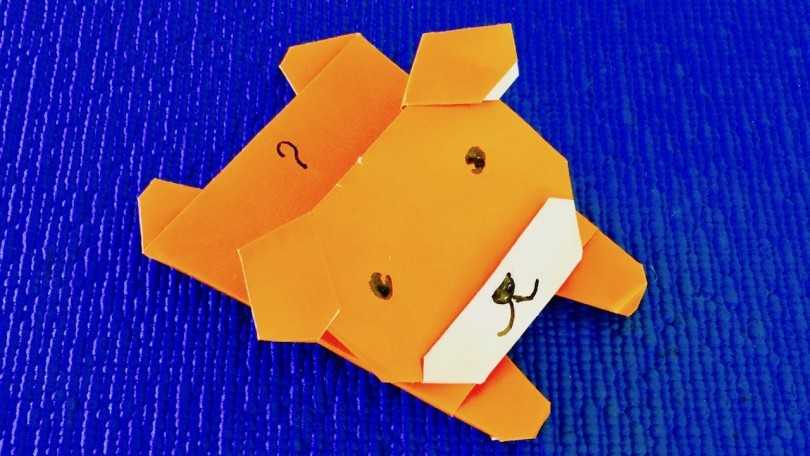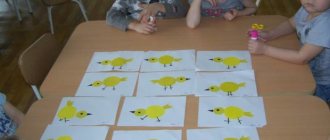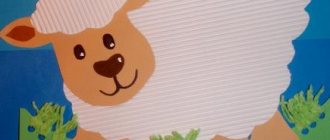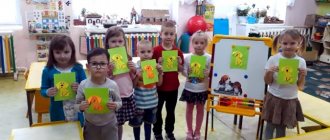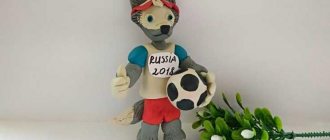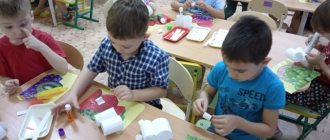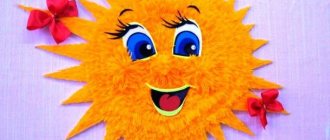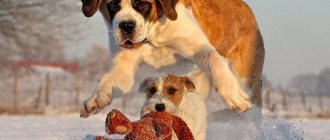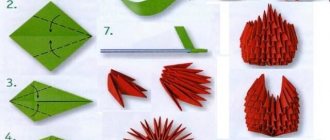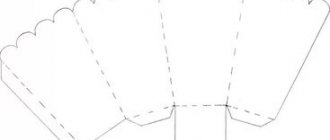Necessary materials
As mentioned above, most crafts will only require paper. To ensure that your work turns out bright and of high quality, you should use office paper, as it is stronger than ordinary children's colored paper. But, like the rest of the world, the art of origami is developing and improving, so some products will require scissors and glue. For example, for modular origami you will need scissors in order to cut the paper into the necessary pieces.
For this type of oriental art, there are also special sets of square paper in pastel shades measuring 10x10 cm. But before buying such a set, you should first study the specific pattern: each craft needs its own size.
For ease of folding, a wooden stick is also used, but it can be successfully replaced by a regular pencil.
For kids, choose paper in brighter shades, but such that its color resembles the color of a particular animal. For example, orange paper is suitable for a fox, gray paper for a mouse, brown paper for a dog, and green paper for a frog. Then the lesson will become doubly interesting.
Pets in kindergarten
As a theme of creativity, they are also popular. If you make crafts with your child before kindergarten, his crafting skills will come in handy.
How to make a paper duck using origami technique
In this master class we will show you step by step how to make a duckling from single-sided yellow paper using the origami technique. Photo 1.
To make the duckling we prepared:
[*]a square of yellow single-sided paper with a side of 10 cm; [*]a rectangle of the same paper measuring 10x5 cm; [*]glue; [*]plastic eyes.
We will use a square to make the body of the duckling, and a rectangle will be needed to create its head. Let's start with the torso. To do this, fold the yellow square in half with the white side inward.
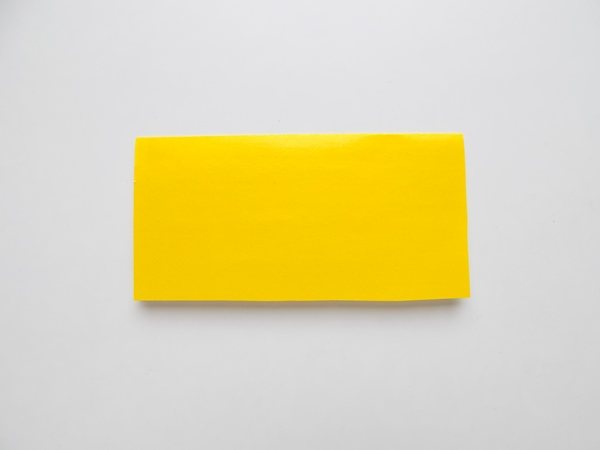
At the place of the fold we mark the middle, and then bend the sides at an angle (they must be symmetrical).
Then we bend these corners down again.
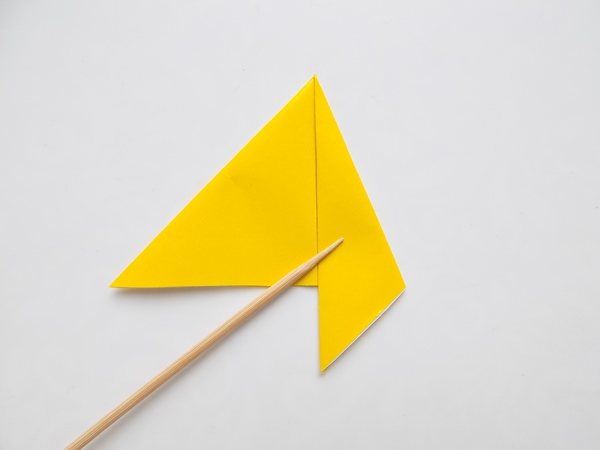
We make the same fold on the other side.
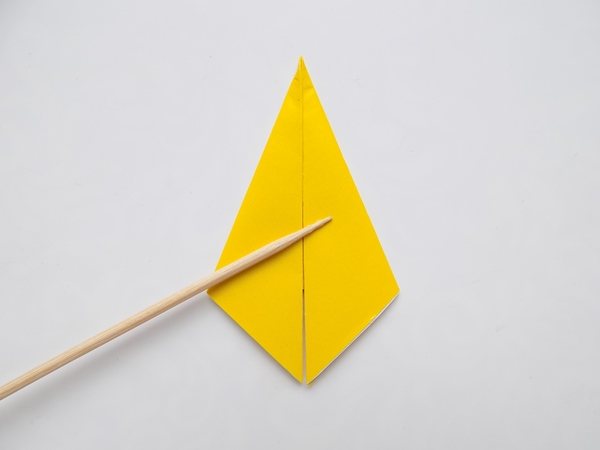
We will now bend the lower corners to the sides. At this stage, you can use glue to fix all the layers.
On the reverse side we see the resulting blank for the duckling's body.
To create the head, take a rectangle and fold it in half, with the white side on the inside.
Fold the bottom edge of the top layer up.
Then we make folds on the sides in the form of small triangles. Secure them with glue.
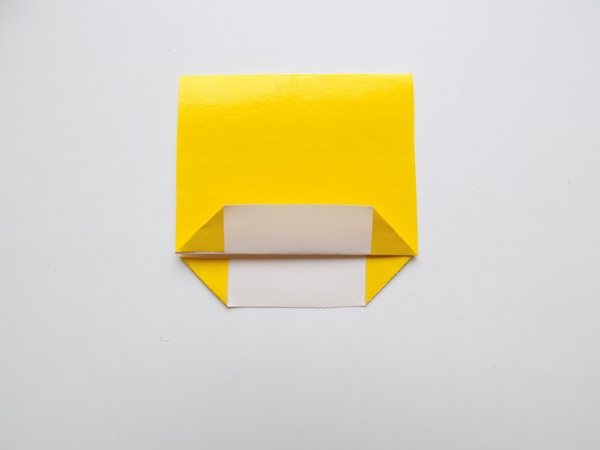
Then you need to bend these corners again as follows. Let's use glue again.
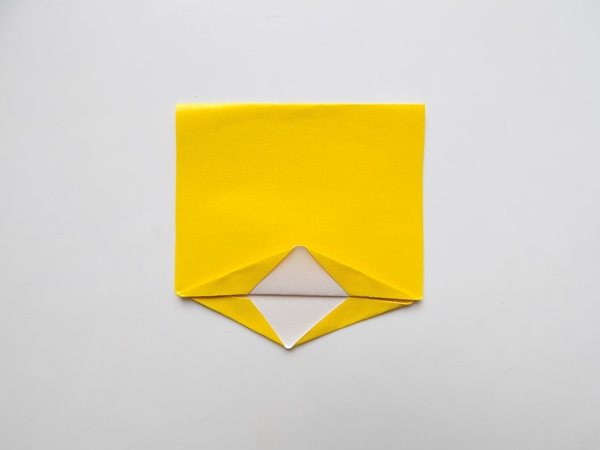
Fold the top corners to the reverse side. This is the template for the duckling's head.
We connect it to the body.
Add plastic eyes. Our paper duck is ready.
Applications from up to 3 years
The application is done quickly, children will not have time to get tired or lose interest.
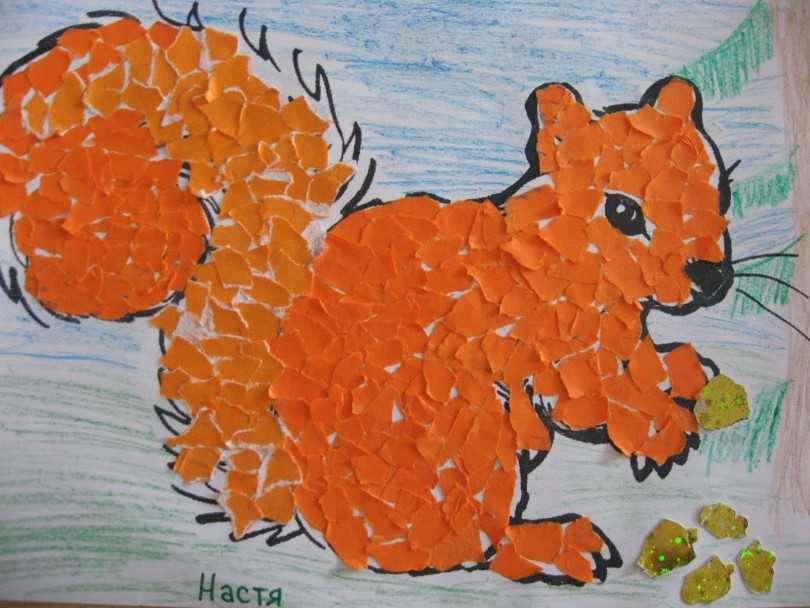
Pet crafts will work well with small children. Children know the main representatives from books and toys: a cat, a dog, piglets, a cockerel, hens and chicks, a cow, a horse.
Draw or copy, if you don't know how to draw, an image from any children's book. Choose the most schematic design.
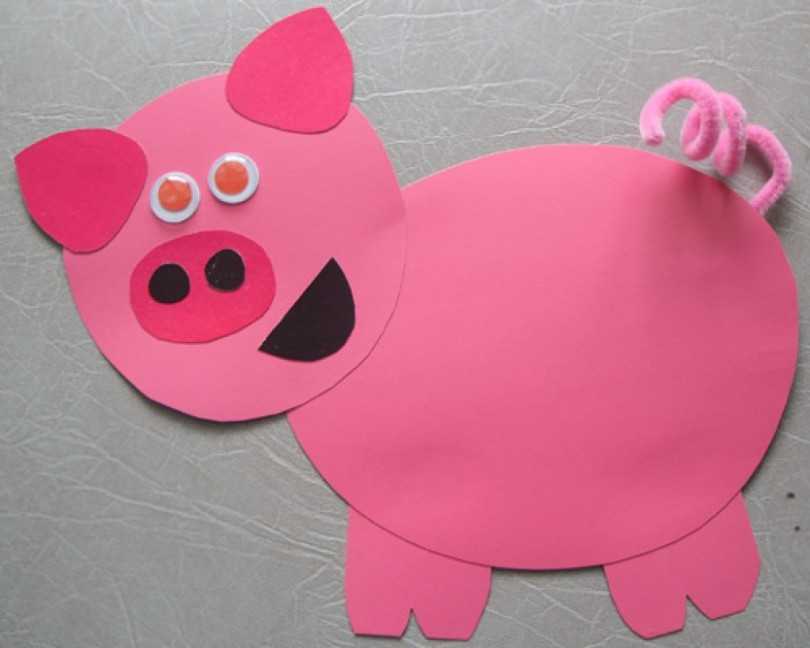
Break the picture down into simple geometric shapes. The body is an oval or a rounded square, the head and eyes are a circle, the paws and tail are rectangles and ovals of varying degrees of elongation, the ears are triangles or semicircles.
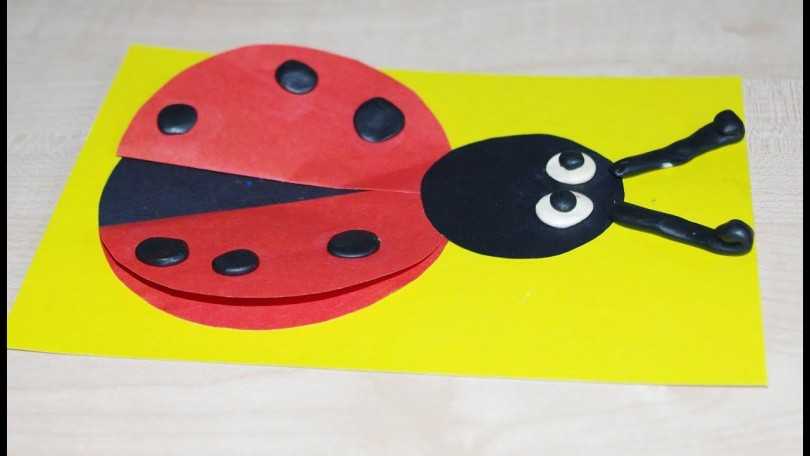
Transfer to colored paper and cut out.
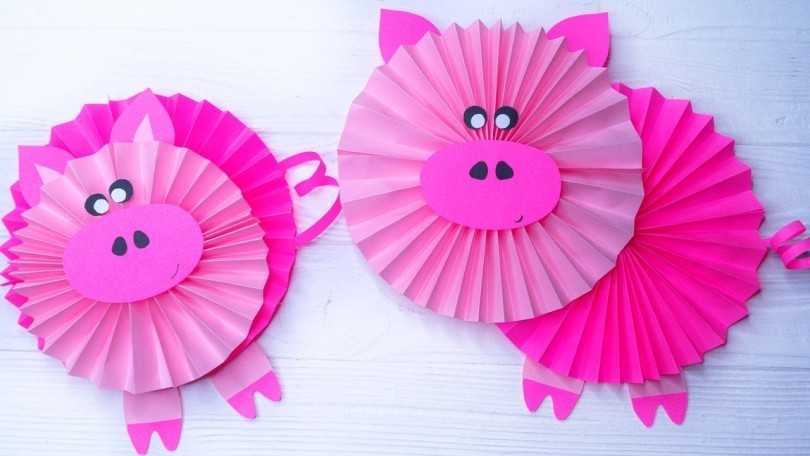
Based on the sample picture, together with the baby, assemble a “constructor” from parts from large to small. Add easily recognizable features to your pet: for a rooster - a red beard and a motley tail, for a pig - a snout and a ring tail (twist a thin strip of paper with scissors), for a cow - brown spots.
Note!
- DIY paper machine craft: various options for creating a machine
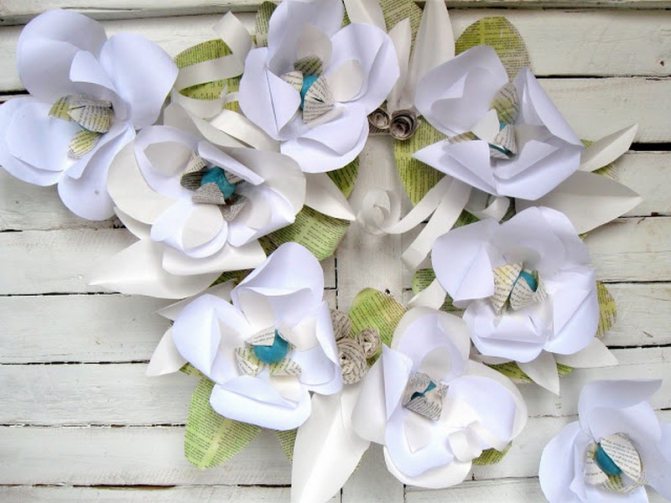
How to make paper flowers with your own hands for children - a master class on making
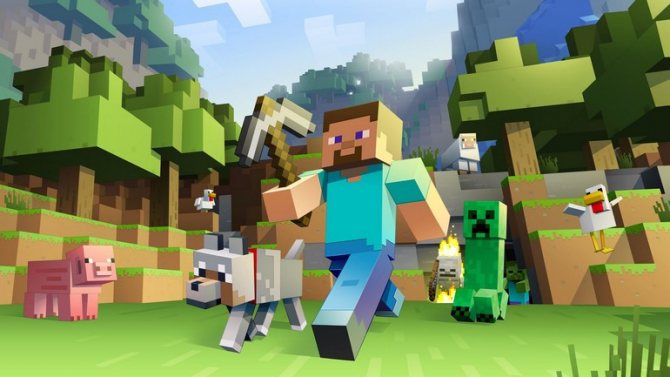
How to make Minecraft figures and blocks from paper: step-by-step instructions
Believe me, children will forgive you for being sketchy and simple, but they will be delighted that they made the animals with their own hands.
Invite the children to make a paper mosaic. Draw a pet on cardboard. Now you need to cover its parts with the correct matching colors.
Tear small pieces of multi-colored paper (10x10 mm). Apply PVA to the base, sprinkle the resulting confetti and let dry. The picture is ready! Kids love magic tricks.
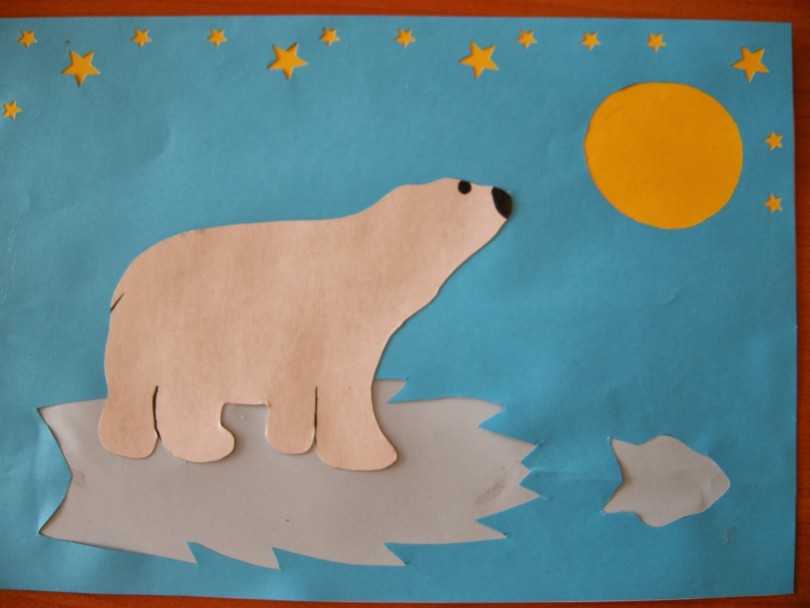
These are simple paper animal crafts for 2 year olds. For older children, we advise you to complicate the task and expand your arsenal of creative techniques.
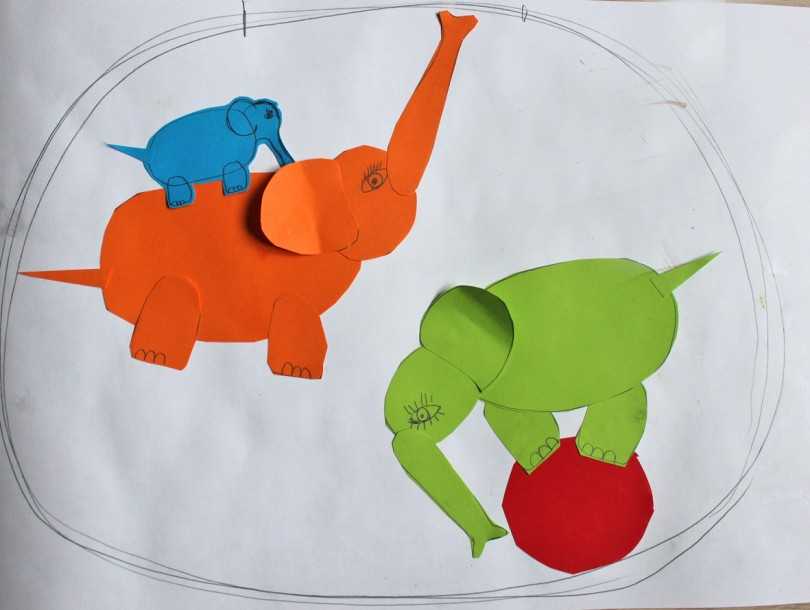
Origami bunny - diagram for kids
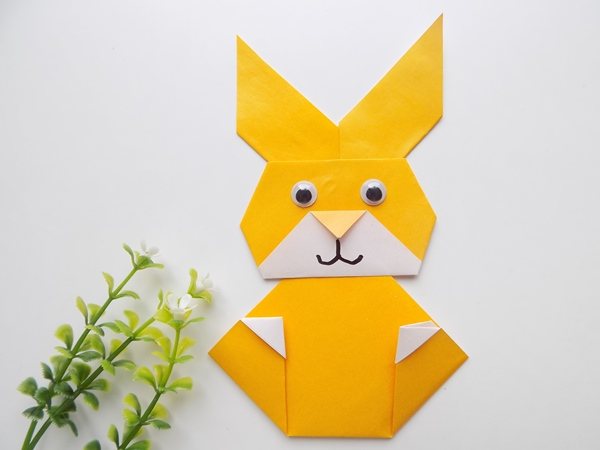
By folding a few square pieces of paper we can make the bunny shown in this master class.
To make the craft we will prepare:
- 2 squares of orange single-sided paper;
- glue stick;
- scissors;
- decorative eyes;
- black felt-tip pen.
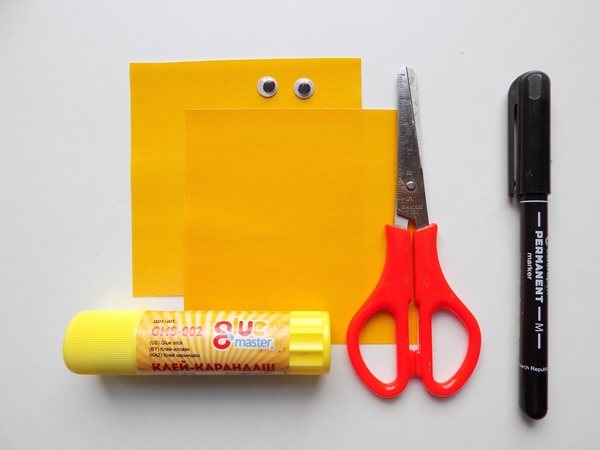
From one square we will make a head with ears, and the second orange square will be needed to create the bunny’s body. Let's start by folding the square diagonally.
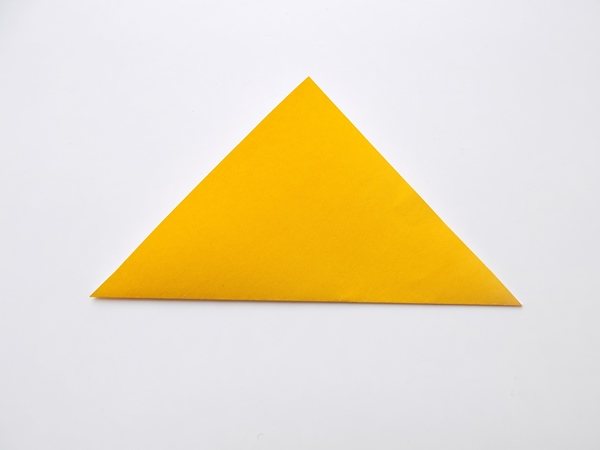
Then we cut it along the fold line. We get 2 triangles. From one we will make a head, and the second triangle will be needed to create the bunny ears.
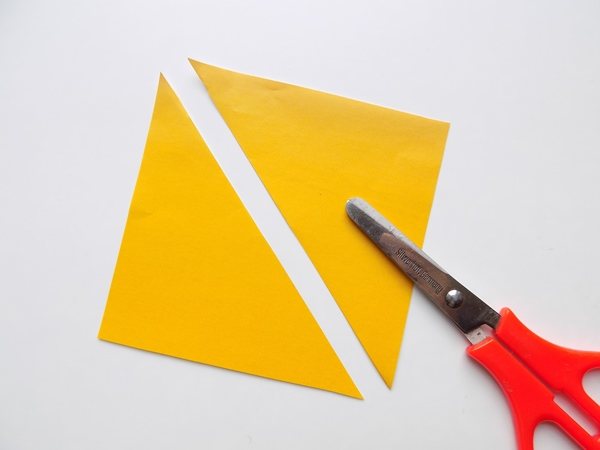
Let's start with the head. To do this, bend the top of one triangle so that the white side is on top.
Then we will bend another small corner on the muzzle.
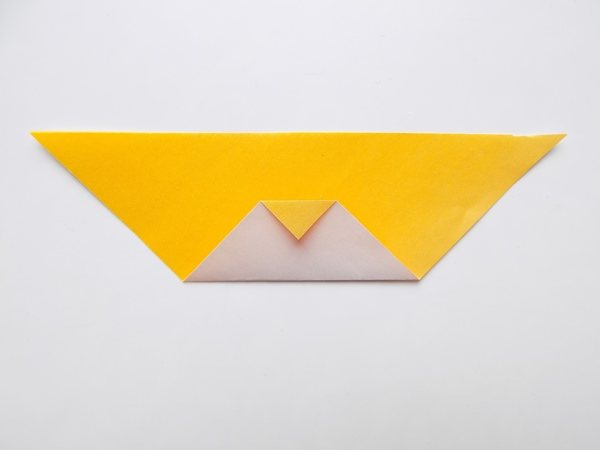
Let's form the sides; to do this, bend the edges of the workpiece at a slight angle.
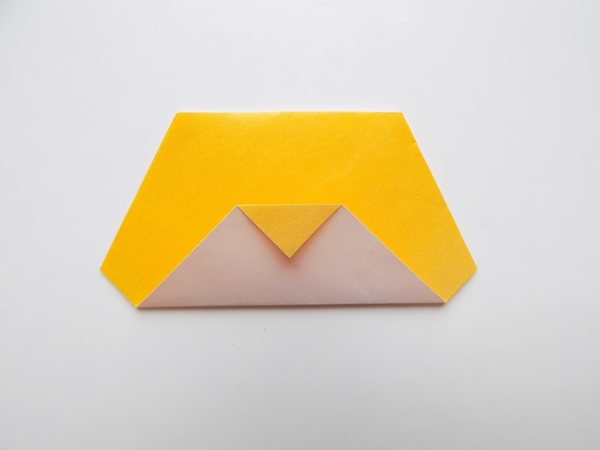
Additionally, we will make folds at the bottom.
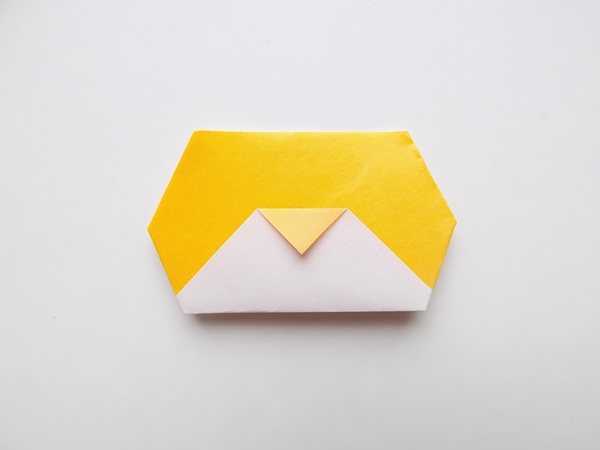
We take the second triangle and start making ears from it. To do this, bend the top as follows.
Then you need to bend the right corner up.
Fold the left corner symmetrically. The completed folds can be glued. These are the ears for a bunny.
Glue them on the back side of the muzzle.
Let's start creating the body. To do this, bend the remaining square diagonally.
We bend the side corners of the resulting triangle upward.
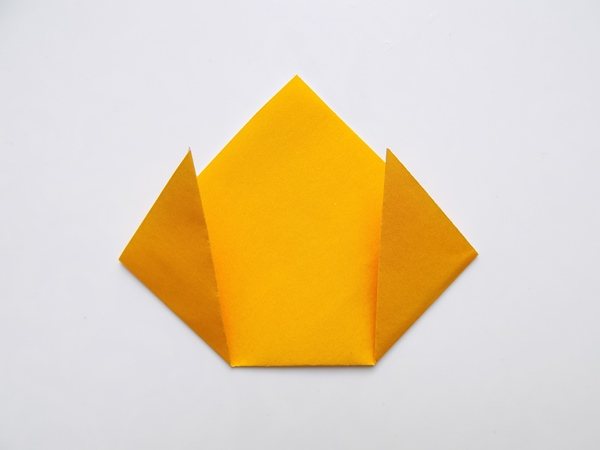
Then fold back the small corners. These will be the paws of the future bunny.
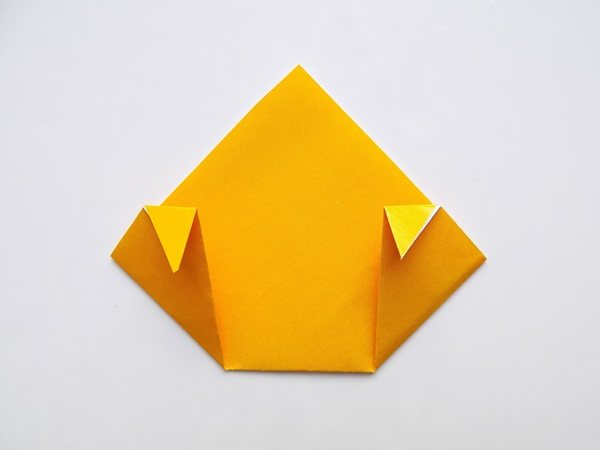
To finally form them, you will need to carefully unfold the entire square, and then turn the small corners to the other side. Our bunny got these white paws.
We connect the head and torso together.
All that remains is to design the face. We do this with a black felt-tip pen and also glue on the eyes. We made such a paper bunny.
Whale
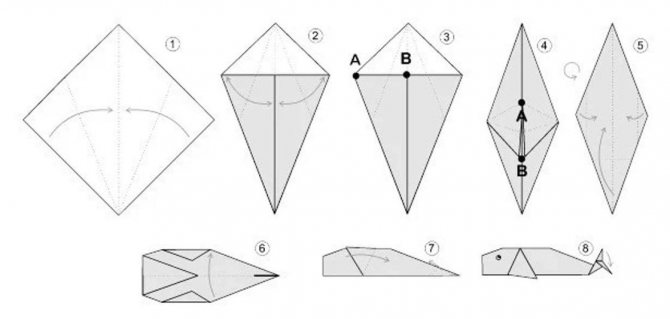
This is a very simple origami diagram that a child can fold with his own hands. Prepare a square sheet and proceed to assembly like this:
- Arrange the sheet in a diamond shape.
- Fold the bottom corner towards the top. Expand.
- Now bend the left and right halves to the intended line like an airplane.
- Fold the remaining corner to the center line as well.
- Fold the figure in half. A folded triangle will come out.
- Bend its corner upward to form a whale's tail.
Glue the eyes on the figure and send the whale swimming.
Owl using origami technique - diagram for kids
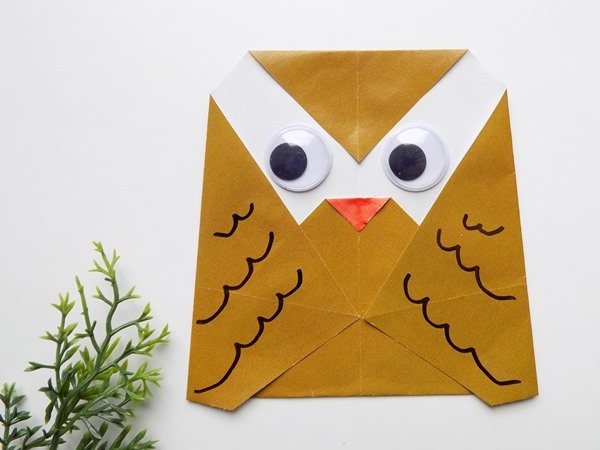
The origami technique can be both complex to make and simple, when even small children can handle the crafts. In this master class we will demonstrate an easy way to create an owl from a simple square of paper.
To make such an owl we need to take:
- square of single-sided brown paper;
- glue;
- orange felt-tip pen;
- a pair of large plastic eyes.

First, we must make diagonal folds on the square piece. To do this, fold the square in half, it takes the form of a triangle.
Then we make an additional fold along the other diagonal, after which we place the square with the white side up.
We pay attention to the vertical fold, or rather, to its upper half. This part needs to be visually divided into 3 parts, after which one third should be folded down. You can immediately use glue and fix this corner.
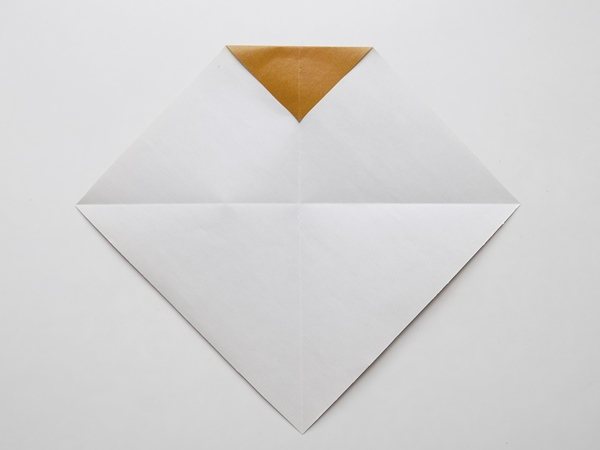
We bend the opposite bottom corner up so that it touches the top. Here again we take glue and fix this fold.
Now we bend the sides, do it symmetrically, this is how we made the owl’s wings.
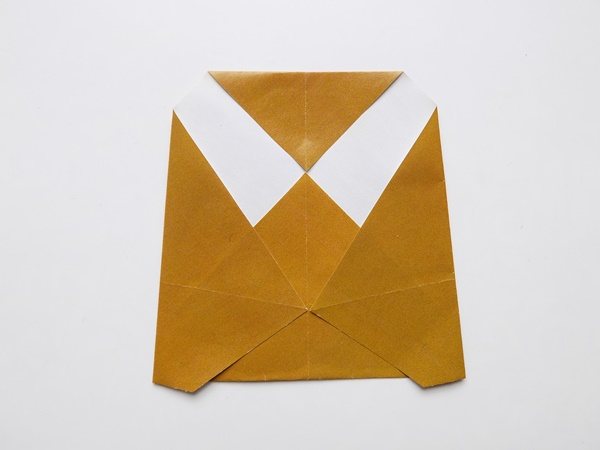
We bend a small part of the previously bent corner in the opposite direction, this will be the owl’s beak.
Color it with an orange felt-tip pen.
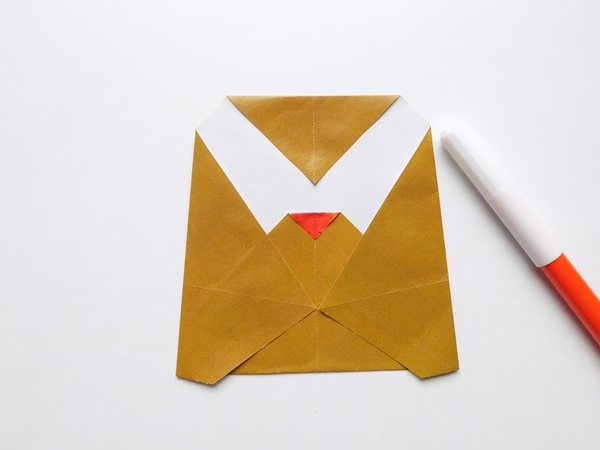
Glue on large plastic eyes.
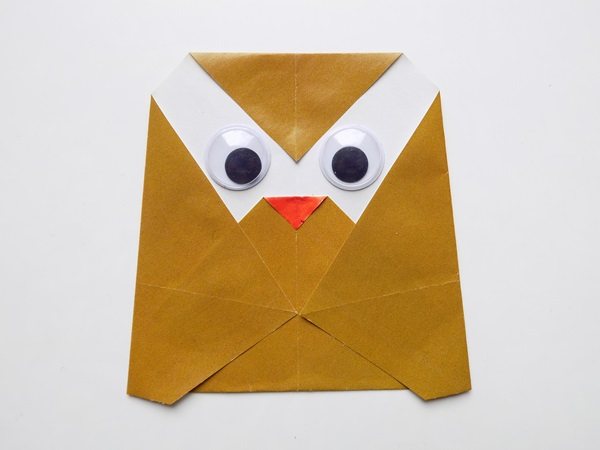
All that remains is to mark the plumage of our bird; for this we will use a black felt-tip pen.
Our paper owl is ready.
Preview:
Abstract of GCD for design
“Making toys from cylinders for a puppet theater”
Subject. Making characters from cylinders for a tabletop theater based on familiar fairy tales (children's choice).
Artistic creativity. To promote the development in children of the ability to create artistic images. Form their aesthetic taste. To develop imagination, ingenuity, the desire for creativity, knowledge of the properties of materials, and the desire to experiment with them.
Cognition. Introduce them to making crafts based on a cylinder and learn how to perform them according to the teacher’s verbal instructions. Learn to manage your activities, organize your work independently, and perform a variety of intellectual actions.
Communication. Learn to reason, explaining your point of view. To develop intonation expressiveness of speech in children.
Socialization. Develop the ability to determine mood. Foster empathy and group cohesion.
Health. Develop expressiveness of movements (facial expressions, pantomime).
Safety. Strengthen the skills of safe use of scissors.
Material. Toilet paper rolls, paint, brushes, markers, colored paper, glue, scissors.
Preliminary work. Reading fairy tales, looking at illustrations, playing games in the theater corner.
Progress of direct educational activities.
Teacher. Guys, today Pinocchio came to visit us, he ran away from Karabas Barabas and decided to organize his own puppet theater. But he doesn’t have artists, he asks you to help make characters for a tabletop theater from cylinders.
The teacher shows the children how to make an owlet from a cardboard toilet paper cylinder.
- We paint the cylinder or cover it with colored paper.
- Cut out the wings, tail, eyes, beak.
- Glue the parts to the body.
- We draw feathers with a brush or felt-tip pens.
Children are offered templates for making various toys.
Children with a high level of training can invent and design their own characters for the theater.
During the work, the teacher helps those children who need it.
The evaluation of the work is carried out on behalf of Buratino. He says that all the children got good toys and now he has his own theater.
At the end of the lesson, all crafts are exhibited in the theater corner, where children act out performances with them in independent activities.
Source
A very simple origami diagram - Mouse
Another simple craft for kids using the origami technique is a paper mouse. To make it, you can take colored paper of any shade, the main thing is that it is double-sided. You will need a square measuring 10x10 (you can take a different size, a larger one, to make folding easier). We do it according to the diagram:
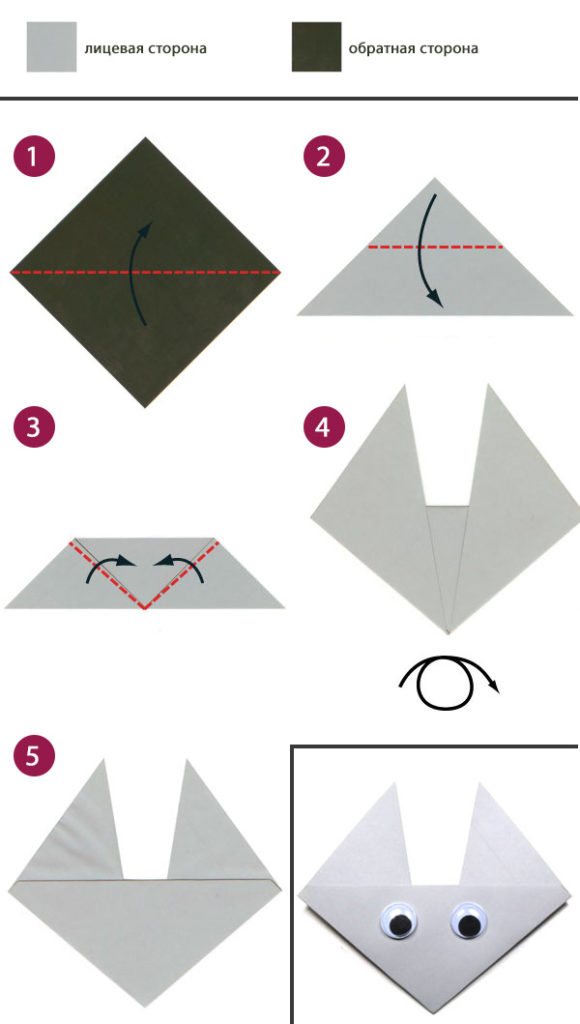
At the end, glue on the doll’s eyes (you can draw them with a marker), and fix the folds with glue.
Please note: for babies it is better to use lighter paper to make it easier to fold. Thick paper holds its shape better, however, it can be difficult for a child to fold it in several layers.
Types of crafts
We have arranged the techniques in order from simple to complex, so that you and your child can increase their level of applied skill:
- Simple applications
- Applications with three-dimensional details
- Simple volumetric figures
- Quilling
- Origami
- Cardboard figures in 3D
- Papier mache.
Origami frog
This origami jumping frog is great fun for little ones. Preschoolers (especially boys) love such entertainment very much. Especially if the craft is made of bright paper.
Just like for many other crafts, for this you will need a square with a side of 10x10 cm (you can take a larger one).
The diagram shows each step, so the craft should not cause you any misunderstanding. The arrows show how and where to fold the paper, and the dotted line shows the fold.
This frog has a small “tail”, by pressing the edge of which you can make the frog move forward - jump.
Accordion base
Instead of a body there is a strip of thick paper folded into a small accordion. Glue flat, stable legs on the bottom, and a head with characteristic details on top to identify the animal.
This way you can make jumping animals: a bunny, a frog, a mischievous monkey with a long tail. Kids will not only be interested in making animal figures with their own hands, but also play with them.
Simple origami animal patterns for kids
For the simplest crafts, a sheet of paper needs to be folded only a few times; for more complex ones, it needs to be folded along curved lines, which is completely beyond the power of a child. Therefore, we have selected very simple schemes according to which you can assemble the animal in a few minutes.
To work, you will need paper of the appropriate shade, a marker or ready-made doll eyes (then you will also need glue). We hope you will like our ideas and start creating origami with your child.
Summary of the lesson on designing “Circus animals from cylinders”
Maria Smirnova
Summary of the lesson on designing “Circus animals from cylinders”
• Continue introducing children to paper sculpture techniques. Show the rich possibilities of combining planar and volumetric curvilinear ( cylindrical ) design
elements.
• Introduce children to the method of twisting a rectangle into a cylinder .
• Formation in children of the ability to analyze samples of structures , highlighting a familiar method of design , and independently use the mastered methods to create new, more complex structures .
Preliminary work: looking at illustrations, postcards with pictures of animals , reading poems and stories about animals and the circus .
Material: the hall is decorated with balloons, music.
The teacher creates an object-based play environment on the screen: flat figures of a gnome, a house, a pond, a clearing, an oak tree, a fir tree, a forest, mushrooms, and pets . Figures of circus animals , made on the basis of a cylinder : a frog, a bear, a hare. The following material is prepared for each child: a rectangular sheet of paper of different colors (7cm*14cm, 2 rectangular strips (11cm*3cm, animal , glue, pencil, scissors, glue brush, stand for brushes, napkins, oilcloth. Magician's costume (cape, hat, chest and “magic”
stick. For the teacher: a rectangular sheet of paper, a paper
cylinder , strips of paper, scissors.
Quilling
The technology refers to a variety of applications, but of increased complexity. The work is small and painstaking, so it is suitable for preschoolers and primary schoolchildren.
The essence of quilling: you need to cover a graphic image of an animal on a base sheet with “curls” of thin ribbons. Quilling paper is sold in office supply stores.
The method is interesting because it very successfully imitates the texture of wool or feathers, if you take on animal crafts.
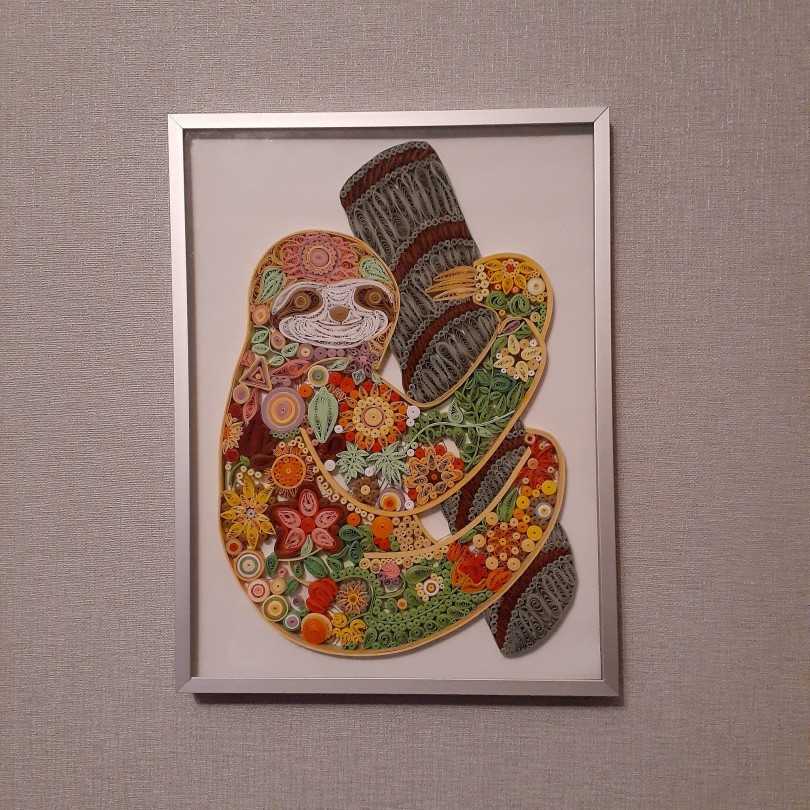
Finger Theater
Glue together 5 small multi-colored truncated cones from cardboard the size of an adult finger. On each one you need to stick the head of an animal (even a primitively depicted one, most importantly, recognizable).
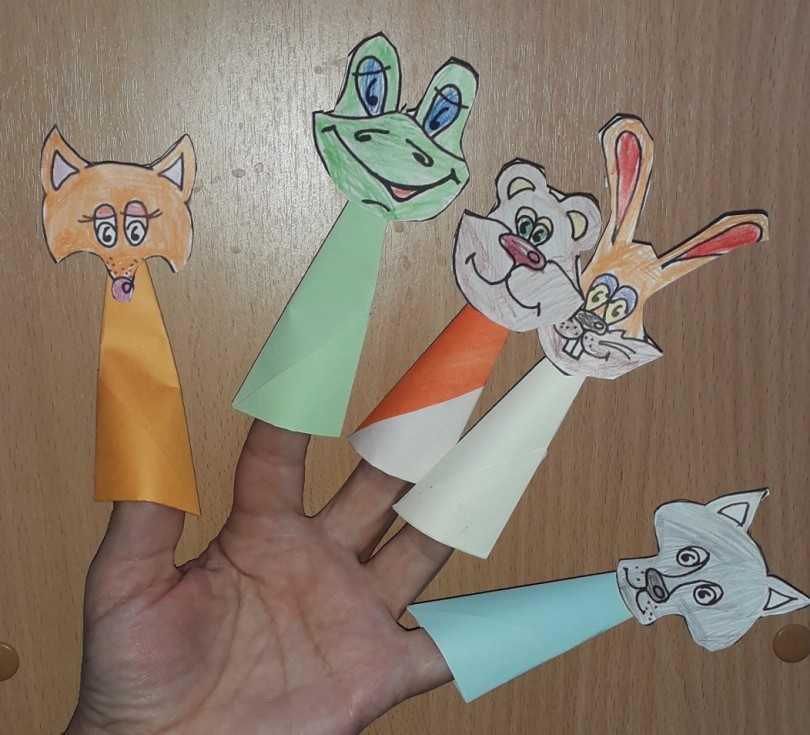
With such simple props, you can perform a home performance with your child, for example, “Teremok”, “Who Says What?” or “My favorite animal.”
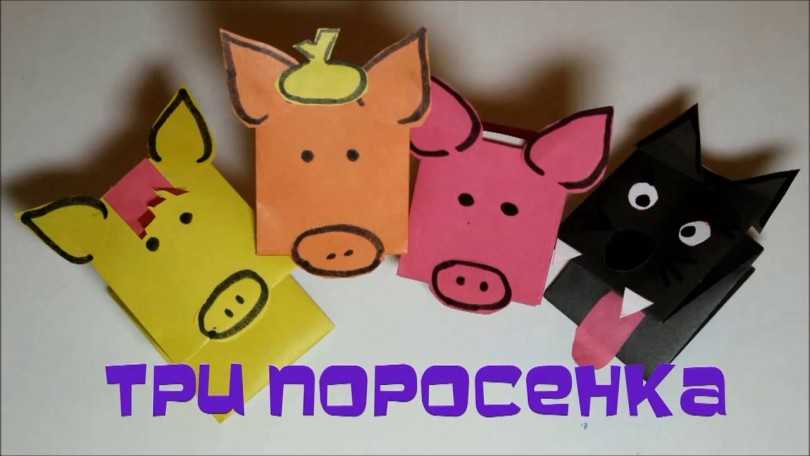
Crafts for kindergarten
We put it out as a separate item for your convenience. In the garden they love nature themes such as “Golden Autumn” or “Spring has come!”, so forest animals that you have made before at home or in additional classes will be useful for you and your child.
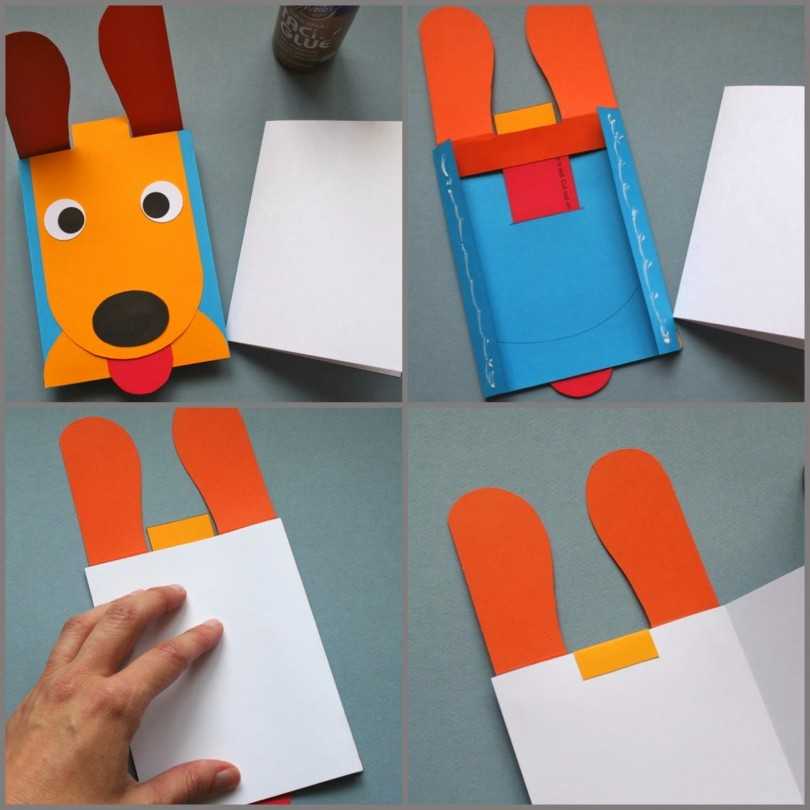
IDEA! Advice for busy parents: assemble the finished figures into a composition on a thick sheet of paper, add seasonal attributes (yellow leaves, pine cones, flowers, twigs, cotton wool snow, etc.) and the standard masterpiece for the garden is ready.
